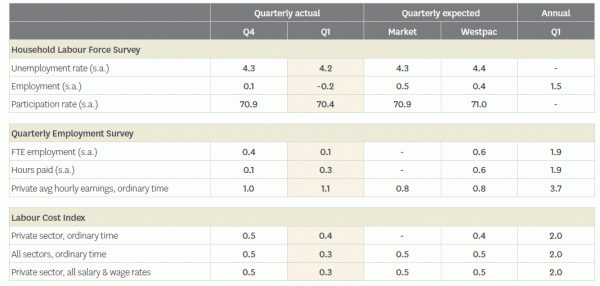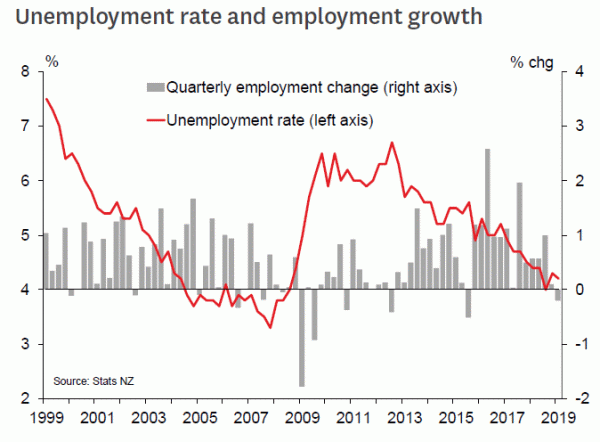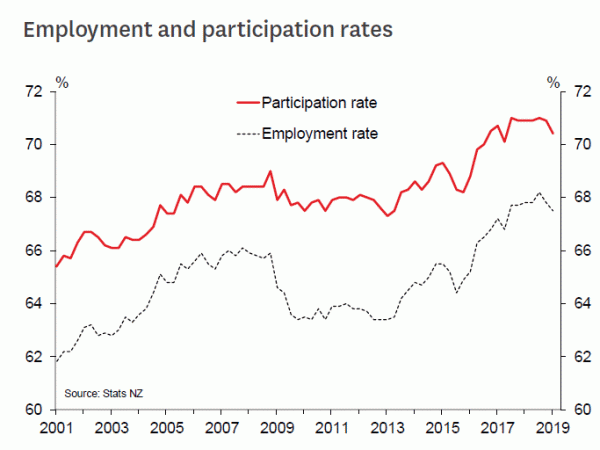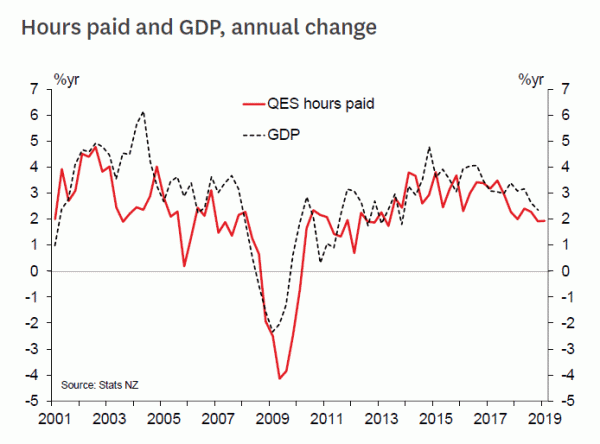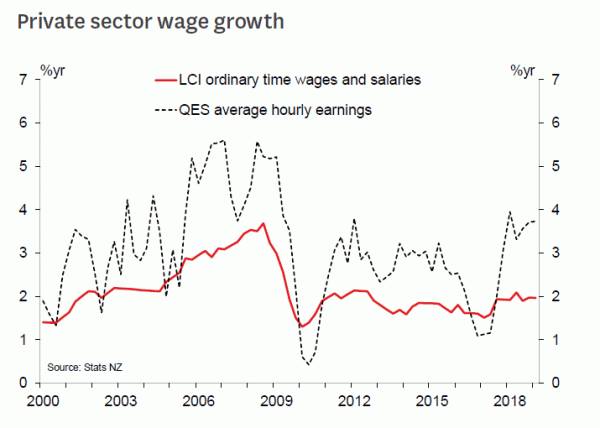- The unemployment rate fell to 4.2% in the March quarter, beating market forecasts.
- However, jobs growth has slowed over the last year or so, in line with the slowdown in GDP growth.
- Wage growth has not picked up to the extent that we would expect in a tight labour market.
- Today’s results give no clear guidance to the Reserve Bank ahead of next week’s Monetary Policy Statement.
The New Zealand labour market surveys for the March quarter were a distinctly mixed bag. The rate of unemployment fell slightly, beating market expectations of a flat result. But jobs growth has slowed over the last year or so, and wage pressures have been surprisingly slow to emerge.
On balance, the surveys don’t provide a clear steer for the Reserve Bank as it prepares next week’s Monetary Policy Statement. The RBNZ previously judged that the economy was operating around ‘maximum sustainable employment’, and today’s results won’t change that assessment. However, the muted starting point for wage growth and the slowing momentum in employment raise questions about the extent to which inflation will pick up in the coming years.
The Household Labour Force Survey (HLFS) provided conflicting signals on the face of it, with a fall in the unemployment rate to 4.2%, but also a 0.2% drop in employment. We usually regard the unemployment rate as the more reliable measure, given the known volatility in employment. In that regard, the fact that unemployment has continued to trend lower is a more positive result than we expected.
In contrast, we think that the fall in employment in the HLFS overplays the extent of weakness. Large or unusual movements in employment often come with matching changes in the labour force participation rate, as was the case this time – participation fell from 70.9% to 70.4%. And a closer look suggests that the declines were quite narrowly focused. Full-time employment saw a solid 0.8% rise, while part-time employment plunged by 3.3%. Meanwhile, the fall in participation appears to have been concentrated in the over-50 age groups. Put together, these suggest that the survey may have captured an unusually high number of retirees this time.
Nevertheless, there is clear evidence that the pace of jobs growth has slowed in the last year or so. The Quarterly Employment Survey (QES) recorded just a 0.1% rise in full-time equivalent jobs, and a 0.3% rise in hours paid. Annual growth has dropped below 2% for both measures. The slowdown in the QES measures corresponds with the slowdown in GDP growth over the last year or so, and today’s results point to the likelihood of another subdued GDP outturn in the March quarter (our current forecast is 0.5% growth).
The measures of wage growth were similarly mixed. The Labour Cost Index (LCI) rose by 0.4% overall, in line with our forecast, but the private sector component was surprisingly soft. Other wage measures weren’t quite as subdued. The unadjusted LCI, which includes pay rises based on experience or promotions, ticked up slightly to 3.4% growth on an annual basis. The QES measure of average hourly earnings was stronger than we expected, with annual growth ticking up to 3.7%.
It’s not the case that wages haven’t picked up in recent years – even the LCI, a slow-moving beast by design, has accelerated to dome degree. But with an unemployment rate as low as 4.2%, and with widespread anecdotes that firms are finding it hard to attract workers, it’s surprising that wage growth hasn’t been able to take another leg higher in the last year or so.
We still expect a more substantial lift in wage growth over the rest of this year, but much of that will be driven by the Government in some form. The June quarter will include a 7.3% increase in the minimum wage, the biggest increase in 12 years. And at some point, public sector pay settlements (e.g. primary school teachers) will provide a boost.
But a sustained lift in wage growth will depend on the strength of the economy. In the mid-2000s, rapid GDP growth saw the unemployment rate drop below 4%, which was followed by a substantial lift in wage growth (even after adjusting for inflation). That sort of momentum has been lacking this time around.




